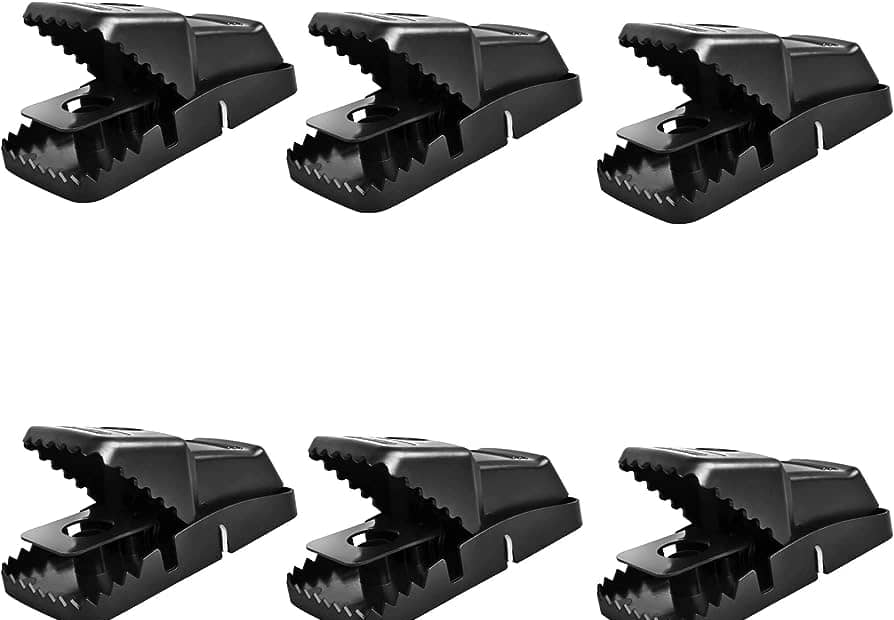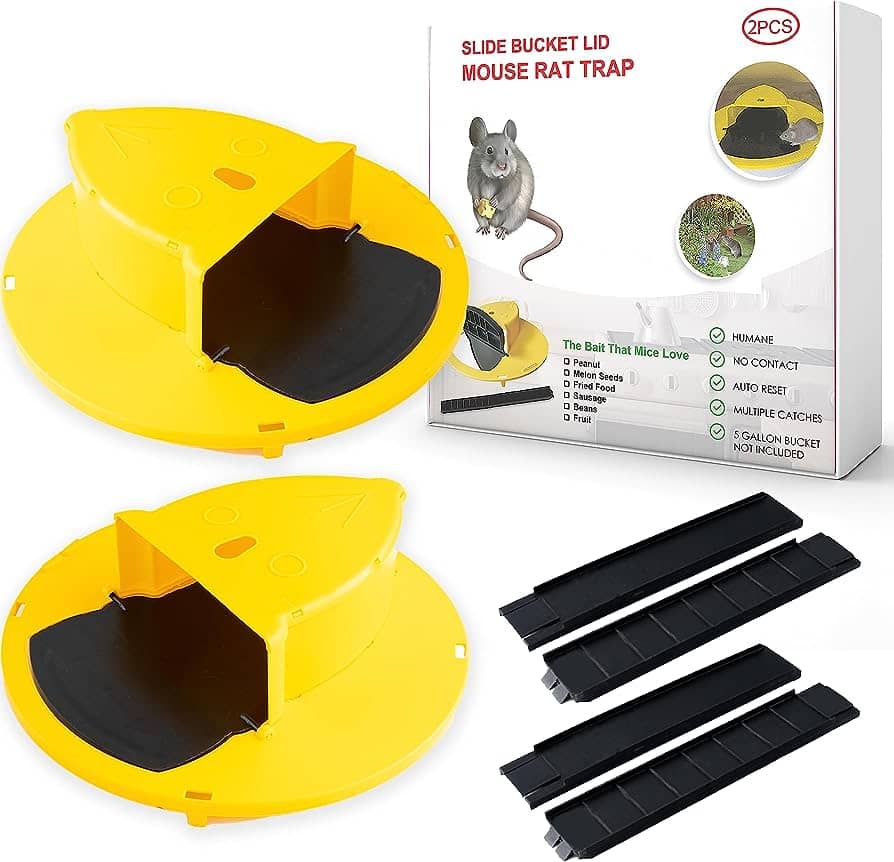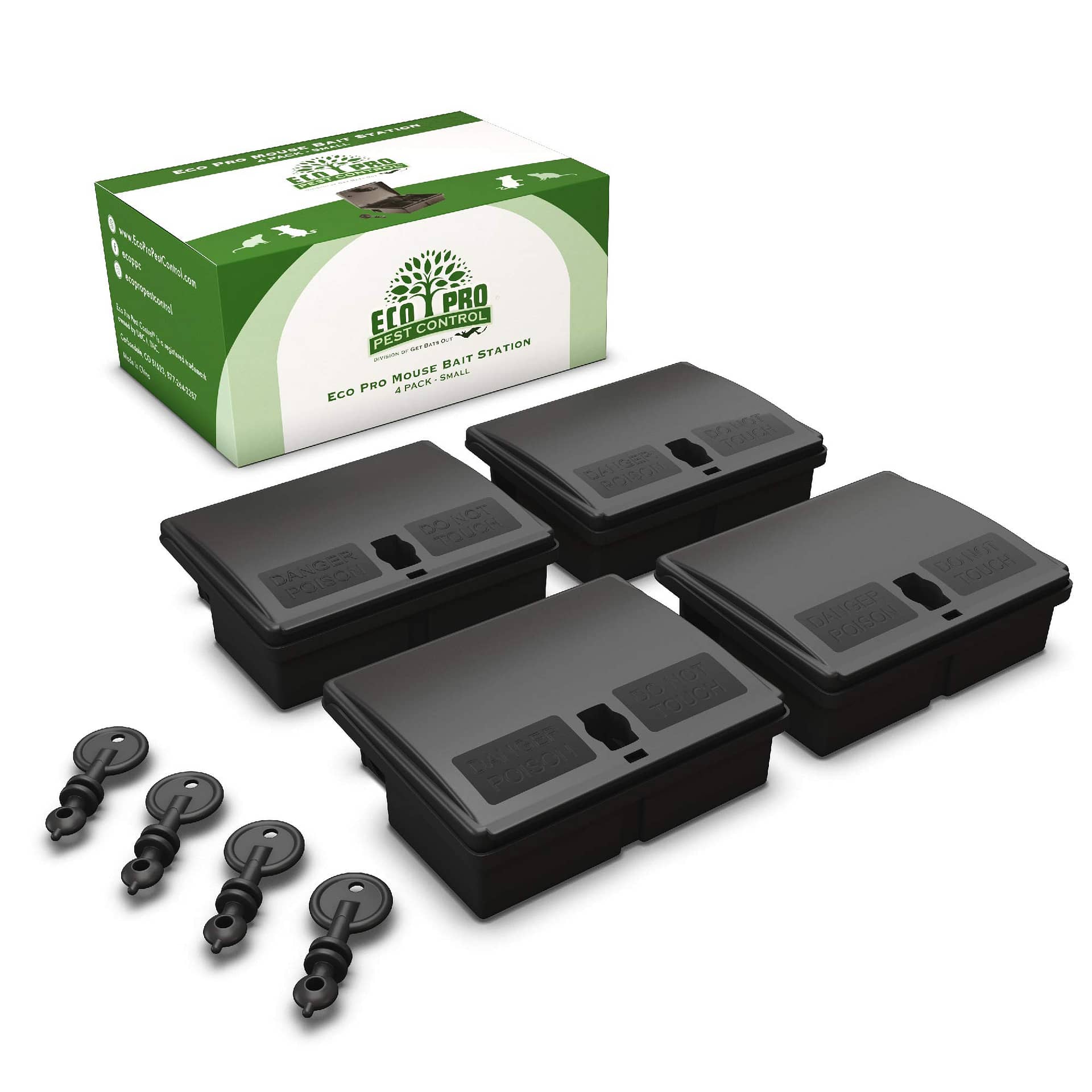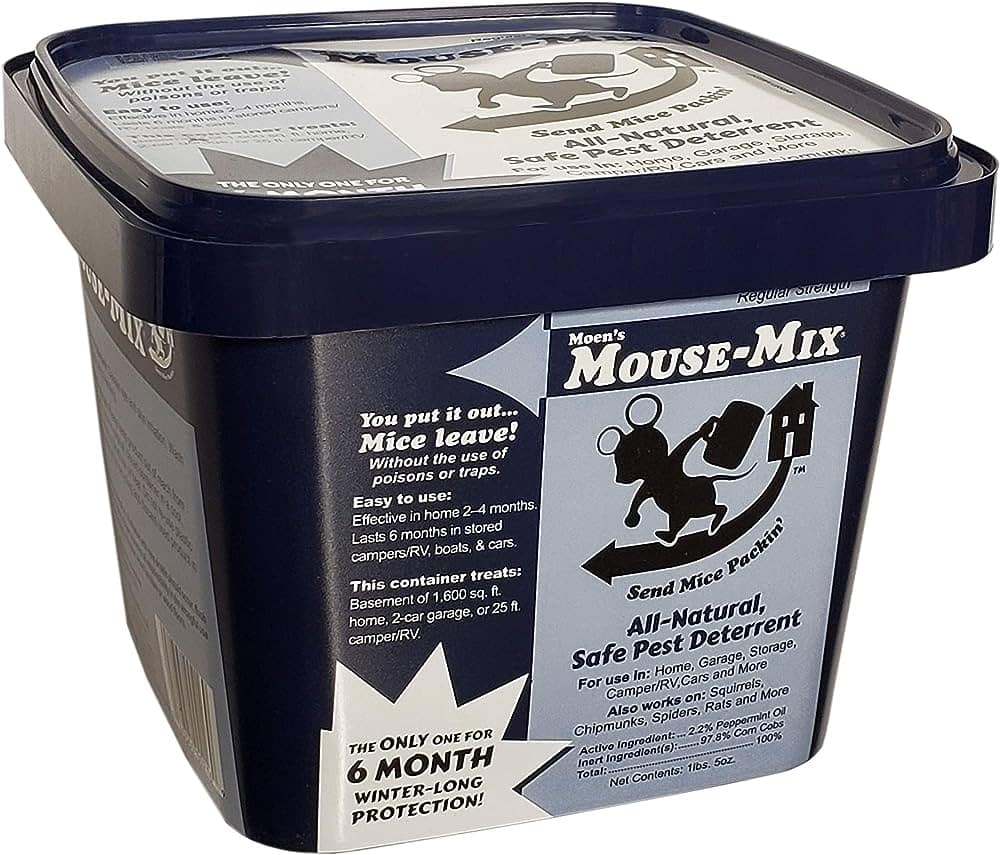Mouse trapping in sensitive environments can be successfully done using eco-friendly approaches. By utilizing methods that do not harm the environment or put other animals at risk, we can effectively control mouse populations while maintaining a sustainable ecosystem.
We will explore various eco-friendly approaches for mouse trapping in sensitive environments. These methods prioritize the protection of the environment and the well-being of other species, making them ideal for use in eco-sensitive areas. Whether it’s using traps that capture mice live or implementing natural repellents, these approaches ensure that mouse control is achieved without causing harm to the delicate balance of the ecosystem.
So, let’s delve into the world of eco-friendly mouse trapping methods for sensitive environments.
The Need For Eco-Friendly Mouse Trapping
In sensitive environments, eco-friendly mouse trapping methods are essential for effective pest control. These approaches prioritize the safety of both the ecosystem and humans, ensuring a harmonious coexistence with nature.
In today’s world, where environmental sustainability is becoming increasingly important, it is vital to adopt eco-friendly approaches in all aspects of life. This includes mouse trapping in sensitive environments, where traditional methods can have negative impacts on the ecosystem. Finding alternatives that are both effective at controlling mice and environmentally friendly is crucial.
Let’s explore why there is a growing concern for eco-friendly mouse trapping methods.
Negative Impact Of Traditional Mouse Trapping Methods:
- Chemical-based pesticides: Traditional mouse trapping often involves the use of chemical-based pesticides, which can have harmful effects on the environment. These pesticides can contaminate soil, water sources, and even affect non-target species. Additionally, they may pose health risks to humans and domestic animals.
- Rodenticides: Another commonly used method is the use of rodenticides, which are toxic substances designed to kill rodents. However, these substances can have unintended consequences. Rodents may consume the poison and then become prey for other animals, leading to bioaccumulation in the food chain. This can ultimately harm predators and other wildlife.
- Inhumane traps: Some traditional mouse trapping methods involve inhumane traps that cause unnecessary suffering to the animals. Snap traps and glue traps, for example, inflict pain and distress on trapped mice before they are eventually killed.
- Waste: Traditional mouse trapping often generates waste, such as single-use traps and bait containers. This waste, if not properly disposed of, can contribute to pollution and further harm the environment.
- Resistance to pesticides: Continuous use of chemical-based pesticides and rodenticides can lead to the development of resistance among mouse populations. This means that over time, the effectiveness of these methods decreases, leading to the need for stronger and potentially more harmful substances.
Considering these negative impacts, eco-friendly mouse trapping methods are gaining popularity as a more sustainable and humane alternative. By exploring and adopting these approaches, we can effectively control mouse populations while minimizing harm to the environment.
Environmental Factors To Consider
Mouse trapping in sensitive environments requires careful consideration of environmental factors. Eco-friendly approaches can reduce harm while effectively managing mouse populations.
Understanding Sensitive Environments And Their Unique Challenges
Sensitive environments require special consideration when it comes to mouse trapping methods. These environments can include areas such as nature reserves, national parks, and wildlife sanctuaries, where the preservation of the ecosystem is of utmost importance. Understanding the specific challenges of these environments is crucial in order to implement effective and eco-friendly mouse trapping techniques.
Identifying Potential Risks And Dangers Of Using Conventional Mouse Trapping Methods In These Environments
In sensitive environments, using conventional mouse trapping methods can pose risks and dangers that may undermine the conservation efforts. It is important to be aware of these risks and consider alternative approaches that minimize harm to the environment. Here are some key points to consider:
- Chemical contamination: The use of chemical-based traps or rodenticides can introduce harmful substances into the environment, affecting not only the targeted rodents but also other non-targeted animals and plants.
- Disruption of natural ecosystem: Indiscriminate trapping methods can disrupt the natural balance of the ecosystem by removing key predator-prey interactions or causing unintended consequences on other species.
- Invasive species: Conventional trapping methods may inadvertently attract invasive species, further exacerbating the problem by introducing non-native species that can harm the sensitive environment.
- Wildlife entanglement: The use of traps that are not species-specific can lead to unintended capture of non-targeted wildlife, causing unnecessary suffering or even death.
To mitigate these risks and dangers, it is essential to adopt eco-friendly mouse trapping approaches specifically designed for sensitive environments. These methods prioritize the well-being of the ecosystem while effectively managing mouse populations. By understanding the unique challenges and identifying potential risks, we can implement mouse trapping techniques that are both environmentally responsible and sustainable.
Eco-Friendly Mouse Trapping Methods
Discover eco-friendly mouse trapping methods for sensitive environments that are effective and safe. These approaches prioritize the environment without compromising on performance, providing a humane solution for mouse control.
Mouse infestations can pose a significant challenge, especially when dealing with sensitive environments. However, there are effective and eco-friendly approaches to mouse trapping that can help address this issue without causing harm to the environment or the rodents themselves. In this section, we will explore four such methods: biological control, physical barriers, humane traps, and electronic repellents.
Biological Control: Utilizing Natural Predators And Prey
- Introducing natural predators: Predatory animals such as cats or barn owls can help manage mouse populations by hunting and preying on mice.
- Attracting prey species: Creating habitats that attract natural prey for mice, such as certain bird species or insect populations, can lead to a decrease in mouse populations as the prey acts as a natural deterrent.
Physical Barriers: Creating Barriers To Prevent Mice Entry
- Sealing entry points: Locating and sealing any potential entry points that mice may use, such as small cracks or gaps in walls, floors, or windows.
- Installing door sweeps: Placing door sweeps under exterior doors to prevent mice from entering through these spaces.
- Using mesh screens: Installing mesh screens over vents, windows, and any other openings where mice could gain access to the premises.
Humane Traps: Catch And Release Methods For Mouse Control
- Live traps: Using live traps enables the capture of mice without causing them harm. These traps can then be safely transported away from sensitive areas and released into more suitable habitats.
- Proper handling and release: Taking care when handling trapped mice by using gloves and releasing them in areas away from human habitation, ensuring they have access to food, water, and shelter.
Electronic Repellents: Using Ultrasonic Devices To Deter Mice
- Emitting ultrasonic sound waves: Electronic repellents emit high-frequency sound waves that deter mice without being harmful to humans or other animals.
- Non-toxic and safe: Electronic repellents offer a humane alternative to traditional trapping methods, as they do not involve the use of harmful chemicals or poisons.
By utilizing eco-friendly mouse trapping methods, it is possible to control mouse populations in sensitive environments effectively. Implementing biological control, physical barriers, humane traps, and electronic repellents can help maintain the balance in these environments without causing harm to the ecosystem or the mice themselves.

Credit: safepropest.com
Safe And Natural Mouse Repellents
Discover effective and environmentally friendly approaches to mouse trapping in sensitive environments with safe and natural mouse repellents. Say goodbye to harmful chemicals and welcome a eco-friendly solution to keep unwanted critters at bay.
Essential Oils: Using Strong Scents To Deter Mice
- Peppermint oil: This powerful essential oil has been proven to effectively repel mice due to its strong scent. Simply soak cotton balls in peppermint oil and place them in areas where mice are likely to enter or nest.
- Eucalyptus oil: Similar to peppermint oil, eucalyptus oil is another scent that mice find repulsive. Soaking cotton balls in eucalyptus oil and strategically placing them around your home can help keep mice away.
- Tea tree oil: The potent smell of tea tree oil is known to deter mice as well. Soak cotton balls in tea tree oil and place them in areas where mice might be tempted to explore.
- Lavender oil: While humans find the scent of lavender soothing, mice find it overwhelming. Dabbing a few drops of lavender oil on cotton balls and positioning them in key spots can help prevent mice from setting up camp in your home.
Natural Deterrent Plants: Planting Specific Herbs And Flowers
- Mint: Mice despise the smell of mint, so planting this herb in your garden or placing potted mint plants near entry points can act as a natural deterrent.
- Rosemary: Another herb that mice find displeasing is rosemary. Planting this fragrant herb around your home can help deter mice from getting too close.
- Marigolds: Not only do marigolds add a touch of vibrant color to your garden, but they also repel mice with their strong scent. Plant them strategically near entrances to keep mice at bay.
- Daffodils: These cheerful flowers do more than just brighten up your yard; they also have a strong odor that repels mice. Consider planting daffodil bulbs around your home to create a natural mouse barrier.
Homemade Repellents: Diy Remedies For Mouse Control
- Cayenne pepper spray: Mice have a keen sense of smell, and cayenne pepper is something they can’t stand. Create a homemade spray by mixing cayenne pepper with water and spraying it in areas where mice are active.
- Vinegar solution: Mice find the smell of vinegar overpowering, making it an effective repellent. Mix equal parts water and vinegar in a spray bottle and apply it to surfaces where mice have been seen.
- Steel wool: Mice can squeeze through tiny openings, but they won’t be able to gnaw through steel wool. Stuffing small holes or gaps with steel wool can prevent mice from entering your home.
- Baking soda and sugar bait: Create your own mouse bait by mixing equal parts baking soda and sugar. Place this mixture in areas where mice frequent, and when they consume it, the reaction in their bodies will be fatal.
By using these safe and natural mouse repellents, you can effectively keep mice away from your sensitive environments without the use of harmful chemicals. Incorporate essential oils, natural deterrent plants, and homemade remedies into your pest control routine to create an eco-friendly approach to mouse trapping.
Preventive Measures For Mouse Infestations
Keep your sensitive environment free from mouse infestations with eco-friendly mouse trapping. Preventive measures such as using humane traps and natural deterrents are effective ways to address the issue without harming the environment.
In mouse trapping for sensitive environments, preventive measures play a crucial role in keeping these pesky rodents at bay. By implementing the following strategies, you can proactively prevent mouse infestations in an eco-friendly manner.
Proper Sanitation: Reducing Food And Water Sources
Maintaining proper sanitation is the first line of defense against mouse infestations. By minimizing food and water sources, you can make your environment less appealing to these furry invaders. Consider the following preventive measures:
- Store food in airtight containers to restrict access and prevent contamination.
- Clean up spilled food promptly, reducing rodents’ opportunities to scavenge.
- Regularly remove trash and maintain clean garbage bins, eliminating attractive food sources.
- Fix leaky pipes and faucets to prevent the accumulation of standing water, which rodents rely on for survival.
Sealing Entry Points: Blocking Mouse Access To Buildings
Preventing mice from entering your buildings is a vital step in mouse trapping. By sealing off their entry points, you can significantly reduce the risk of infestation. Below are some effective strategies to consider:
- Inspect your building for cracks, holes, and gaps, especially near doors, windows, and utility lines.
- Use weather-stripping to seal gaps around doors and windows, denying mice easy access.
- Repair damaged screens and vents, ensuring they are secure and intact.
- Fill any holes or gaps with steel wool or caulking, as mice are unable to chew through these materials.
Regular Inspections And Maintenance: Identifying And Addressing Vulnerabilities
Regular inspections and maintenance are crucial to mouse trapping success. By identifying and addressing vulnerabilities in your environment, you can proactively prevent mouse infestations. Consider the following steps:
- Conduct routine inspections of your property, paying attention to areas such as basements, attics, and crawlspaces.
- Look for signs of mice, such as droppings, nesting materials, and chewed wires or furniture.
- Address any structural issues promptly, such as damaged roof tiles or foundation cracks.
- Trim tree branches and shrubs near your building to eliminate potential access points.
By implementing these preventive measures, you can create an eco-friendly environment that discourages mouse infestations. Take a proactive approach to mouse trapping, and enjoy a rodent-free space in any sensitive environment.
Professional Eco-Friendly Mouse Trapping Services
Our professional eco-friendly mouse trapping services are tailored for sensitive environments, utilizing environmentally-friendly approaches to ensure effective pest control. With our expertise, you can trust us to tackle your mouse infestation while prioritizing the well-being of the ecosystem.
Mouse control in sensitive environments can be a challenge, as traditional trapping methods may not be suitable due to their potential harm to the ecosystem. Luckily, there are eco-friendly approaches available that prioritize the well-being of both the environment and the rodents.
Hiring experienced pest control experts who specialize in eco-friendly mouse trapping services is a wise choice for achieving effective and sustainable results.
Hiring Experienced Pest Control Experts With Eco-Friendly Approaches:
- These professionals possess extensive knowledge and experience in dealing with mouse infestations in sensitive environments, ensuring the safety of both humans and the ecosystem.
- They employ advanced and eco-friendly trapping techniques that do not involve the use of harmful chemicals or toxins, minimizing the impact on the environment.
- Expert pest control technicians understand the behavior and habits of mice, allowing them to implement targeted trapping methods and effectively eliminate the infestation.
- By utilizing their expertise, these professionals can customize their approach based on the specific needs and characteristics of the sensitive environment.
- In addition to their expertise, professional pest control services provide peace of mind, knowing that the mouse infestation is being handled by trained and certified experts who follow strict industry standards.
Benefits Of Professional Services In Sensitive Environments:
- Eco-friendly mouse trapping methods ensure that the ecosystem is not disrupted or harmed during the extermination process.
- Professional pest control experts prioritize the safety of the environment and the well-being of the sensitive area’s flora and fauna.
- Eco-friendly trapping techniques do not pose any risk to humans, making them an ideal choice for sensitive environments such as organic farms, nature reserves, or eco-friendly buildings.
- By opting for professional services, you can avoid the trial and error that often comes with DIY trapping methods, ensuring fast and effective results.
- Professional pest control services offer long-term solutions by identifying and addressing the root cause of the infestation, preventing future mouse problems in the sensitive environment.
In sensitive environments where the balance of nature is critical, it is essential to prioritize eco-friendly mouse trapping methods. By hiring experienced pest control experts who specialize in these approaches, you can effectively eliminate mouse infestations while preserving the delicate ecosystem.
Make the environmentally responsible choice and invest in professional eco-friendly mouse trapping services for a sustainable and harmonious environment.
Case Studies: Successful Eco-Friendly Mouse Trapping Initiatives
Successful eco-friendly mouse trapping initiatives have been implemented in sensitive environments, showcasing effective solutions for mouse control without harming the ecosystem. These case studies highlight the importance of adopting environmentally friendly approaches to address the issue of mouse trapping.
Mouse Trapping In Sensitive Environments: Eco-Friendly Approaches
In today’s world, it is more important than ever to find eco-friendly solutions for various issues, even when it comes to mouse trapping in sensitive environments. Thankfully, there are organizations and individuals paving the way by implementing innovative and environmentally conscious mouse trapping methods.
In this section, we will explore some inspiring case studies that showcase successful eco-friendly initiatives and the positive outcomes they have achieved.
Examples Of Organizations Or Individuals Implementing Eco-Friendly Mouse Trapping Methods In Sensitive Environments:
- GreenTech Solutions: This organization specializes in developing eco-friendly pest control methods. Their approach in sensitive environments involves the use of non-toxic rodent repellents made from natural ingredients. These repellents have proven to be effective in deterring mice while posing no harm to the surrounding ecosystem.
- EcoPest Management: Recognizing the need for sustainable mouse trapping techniques, EcoPest Management has introduced a unique approach in sensitive areas. They employ live catch traps that capture mice unharmed. Trained professionals then relocate these mice to a more suitable habitat. This method ensures the safety of both the mice and the environment.
- The Sustainable Farm: This organic farm has found a harmonious balance between mouse control and environmental preservation. Instead of resorting to harmful chemicals or traps, they have implemented a natural predator approach. By encouraging the presence of natural predators like barn owls and snakes, they have effectively kept the mouse population in check while maintaining the ecological integrity of their farm.
Results And Positive Outcomes Achieved:
- Reduction in non-target species mortality: By using environmentally friendly mouse trapping methods, these organizations and individuals have significantly minimized the unintended harm caused to non-target species. This outcome is crucial for maintaining the delicate balance of sensitive environments.
- Preservation of biodiversity: The successful implementation of eco-friendly mouse trapping techniques has contributed to the preservation of biodiversity in sensitive environments. By avoiding the use of harmful pesticides and traps, these initiatives ensure the survival of various plant and animal species that rely on these habitats.
- Improved ecological health: The positive outcomes achieved by implementing eco-friendly mouse trapping methods have a ripple effect on the overall ecological health of sensitive environments. By reducing the mouse population in a sustainable and non-disruptive manner, these initiatives help maintain the natural processes and dynamics that are crucial for the well-being of the ecosystem as a whole.
These case studies exemplify the importance of adopting eco-friendly mouse trapping methods in sensitive environments. By implementing innovative approaches, organizations and individuals are successfully managing mouse populations while prioritizing environmental sustainability. Such initiatives not only safeguard the delicate balance of these ecosystems but also pave the way for a more sustainable future.
Frequently Asked Questions For Mouse Trapping In Sensitive Environments: Eco-Friendly Approaches
How Do You Ethically Trap Mice?
To ethically trap mice, adhere to these guidelines: 1. Use humane traps that capture mice without causing harm. 2. Place traps in areas where mice are active, such as along walls or near food sources. 3. Bait traps with enticing food like peanut butter or cheese.
4. Check traps regularly and release captured mice in a safe location far from your home.
What Is The Most Efficient Way To Trap A Mouse?
The most efficient way to trap a mouse is by using snap traps or electronic traps.
How Do You Make A Mouse Trap Sensitive?
To make a mouse trap sensitive, ensure the trigger is easily triggered by small movements.
What Are The Most Humane Mouse Traps?
The most humane mouse traps are ones that capture mice alive without causing harm or pain.
Conclusion
Protecting sensitive environments from mouse infestations requires eco-friendly approaches. By focusing on prevention rather than extermination, we can minimize the environmental impact. Implementing proper sanitation practices, sealing entry points, and using non-toxic repellents are essential steps in mouse trapping in these settings.
By choosing eco-friendly options such as natural remedies and humane traps, we can effectively control mouse populations without harming other organisms or disrupting the delicate balance of the ecosystem. It is crucial to educate ourselves and others about the importance of eco-friendly pest control methods in sensitive environments.
By doing so, we can ensure the long-term health and sustainability of these areas. Embracing eco-friendly mouse trapping approaches helps us contribute to a greener world, where harmony and balance between humans, animals, and the environment can thrive. So let’s take action today and make a positive impact on our fragile ecosystems.




